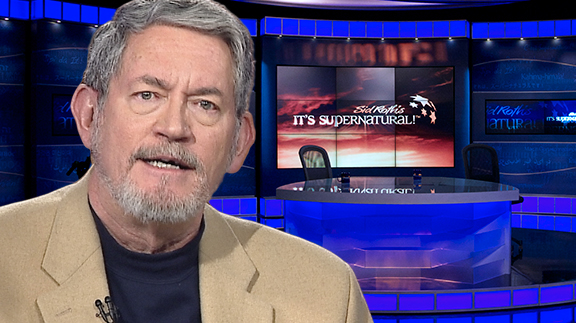Our Guest Robert Heidler

ROBERT: Well, I’m excited to be here today. I’m excited to be with you and I’m exciting to be talking about the Biblical feasts. And I’m going to do something today I have never done before because I’ve taught seminars and taught about the feasts all over the world for years now but I have never in one message just gone through all the feasts, all the major feasts and I’m going to do that today. Hopefully it will be less than six or seven hours long to get them all done—
AUDIENCE: (LAUGHTER)
ROBERT: —but you look wide awake and rested so you’re ready for it, right? Okay. But you know the feasts are an incredible gift of God and as we go through them every year He wants to each year He wants to draw us closer to Him than we were the year before. So in this session I want to really give us a roadmap to the feasts cause we want see how to open the door to His glory. Amen. Lord, we desire Your glory. We desire Your presence. We desire Your fullness in our lives, Lord, that we can walk with You and experience Your goodness. Now one of the most exciting things God is doing in the Church today is the restoration of the Biblical feasts. All over the world we find Christians celebrating things like Passover and Pentecost and Tabernacles and they’re enjoying it! They’re saying wow, this was great! Why haven’t we done this before? But since these feasts are still unfamiliar territory to many Christians I’d like to give you a roadmap today to understand them. Now as you go through the year God wants to take you through a set of key spiritual transactions. And these feasts are not commanded for Christians. You won’t go to hell for not celebrating them but they are given by God to bless us and draw us closer and closer to Him. God’s yearly calendar has three main appointed times. There’s the Feast of Passover in the spring, held in the first month of God’s cycle of feasts. Then there’s Pentecost in the late spring. Its Hebrew name is “Shavuot.” Everybody say “Shavuot.”
AUDIENCE: Shavuot. ROBERT: That’s a free Hebrew lesson. It’s held in the third month of God’s cycle of feasts. And then there’s the “Feast of Tabernacles” held in the fall. It’s in the seventh month of God’s cycle of feasts. Now all of these feasts have three aspects. Passover is really a cluster of three feasts. “Feast of Passover,” “Feast of Unleavened Bread,” “Feast of First Fruits.” Pentecost also has three dimensions. It’s the celebration of the wheat harvest. It’s a celebration of God’s giving Torah, His Word on Mount Sinai and it’s the celebration of God pouring out His Holy Spirit in Acts 2. Then the “Feast of Tabernacles” also has three key times. There’s the “Feast of Trumpets. There’s “The Day of Atonement” and there’s the “Feast of Tabernacles.” Now what do these Feasts picture? I like to picture it like this. Passover pictures redemption and cleansing. Redemption is really the starting point of your walk with God. In Passover we know the story of the putting the blood on the doorposts in Egypt. It’s all about being covered by the blood but then also at Passover they go through their house and remove impurity to prepare them to move forward with the Lord so it’s about being covered by the blood but removing impurity. Then Pentecost is about God’s provision. It’s the first fruits of the wheat harvest. We praise God that He’s brought forth bread from the earth. It’s also God provision of the Law in the Old Covenant at Mount Sinai. It’s the pouring out of His spirit as His provision for us under the New Covenant. Then there’s the long hot summer and you get, finally get to the third of the major feasts “Tabernacles,” which is the celebration of His glory. Tabernacles is about dwelling in the presence of God. God was up on Mount Sinai and He looked down and saw all the Israelites camped in their little tents, their little tabernacles down below and He said hey Moses, make one for Me too and I’ll come down and live there and live with you. That’s what Tabernacles is about, God coming down to tabernacle with His people. Now it’s interesting that these three feasts correlate with the three courts in Moses’ Tabernacle.
